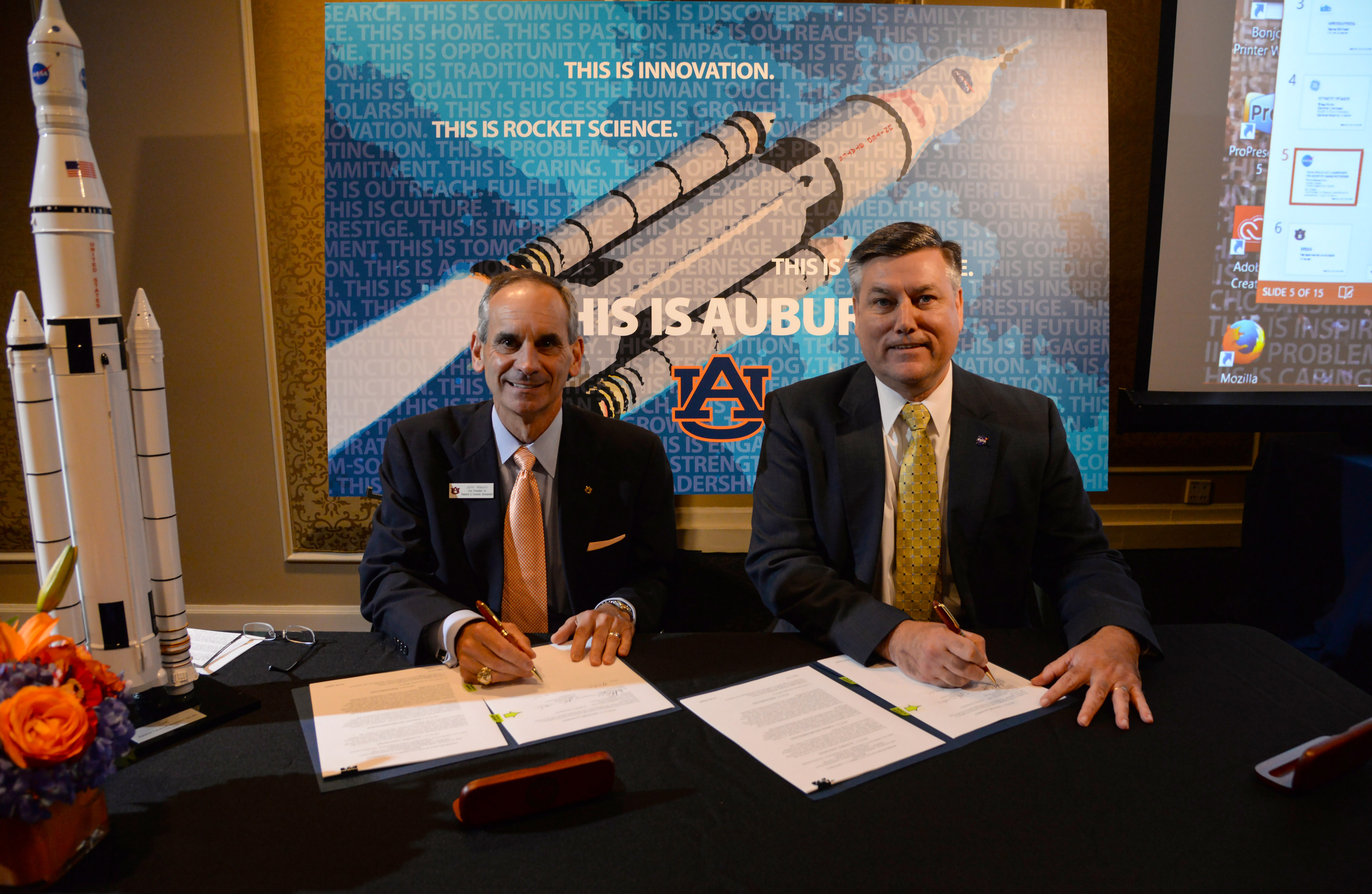Auburn University and NASA sign Space Act Agreement on additive manufacturing
Auburn University and NASA today signed a Space Act Agreement to explore and advance the applications of additive manufacturing, or 3-D printing.
The signing took place during the university’s forum on additive manufacturing, a process that uses 3-D printing to make a three-dimensional part or instrument, providing substantial technological advances and cost savings over traditional manufacturing methods. The forum was co-sponsored by Auburn University and the City of Auburn Industrial Development Board.
“Additive manufacturing is a major advancement for the future direction for the nation’s industries,” said John Mason, Auburn University vice president for research and economic development. “The partnership with NASA is an excellent opportunity to engage and leverage each other’s capabilities and expertise.”
The Space Act Agreement, in addition to focusing on additive manufacturing, is designed to advance STEM disciplines – science, technology, engineering and mathematics – by engaging students and teachers in NASA’s missions and opportunities; investigate and develop technologies; and share facilities, capabilities and technical expertise.
“As we continue developing the agency’s powerful new rocket, the Space Launch System, for deep-space missions to an asteroid and a journey to Mars, additive manufacturing techniques are making it possible to create and test innovative new designs quickly and affordably,” said Patrick Scheuermann, director of NASA’s Marshall Space Flight Center in Huntsville, Alabama. “Marshall is also pioneering the use of 3-D printers in space, and the recycling and sustainability of advanced manufacturing materials needed to enable long-term missions. We’re pleased to partner with industry and academia as we focus on technologies that not only are central to the nation’s space mission but also benefit aerospace and other activities on Earth.”
The Marshall Center has used additive manufacturing to build and test rocket engine components and manufacture the first 3-D printed parts aboard the International Space Station. These parts are currently undergoing testing at Marshall.
Auburn’s forum, “Additive Manufacturing, the Next Industrial Revolution,” brought together leaders from the private sector, academia and government to explore opportunities and challenges of using this advanced technology in manufacturing. Greg Morris, general manager of additive technologies with GE Aviation in Cincinnati, gave the keynote address. GE Aviation is bringing high-volume additive manufacturing to its facility in the city of Auburn to manufacture jet engine fuel nozzles.
“We are establishing partnerships with highly innovative businesses and organizations to spur economic growth throughout the state and region,” Auburn’s Mason said. “These relationships benefit our students with learning experiences, while companies benefit from the practical, applied solutions developed through research conducted by faculty and students.”
By Charles Martin

Categories: Science, Technology, Engineering and Mathematics (STEM), Auburn In the News
Back to Articles




